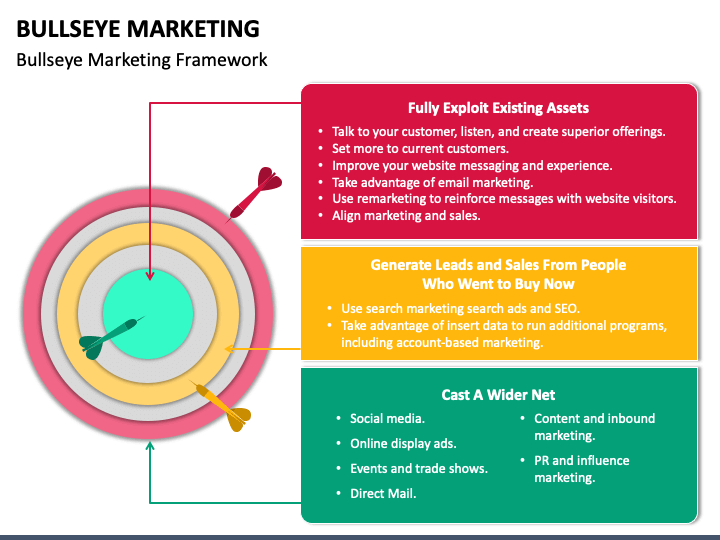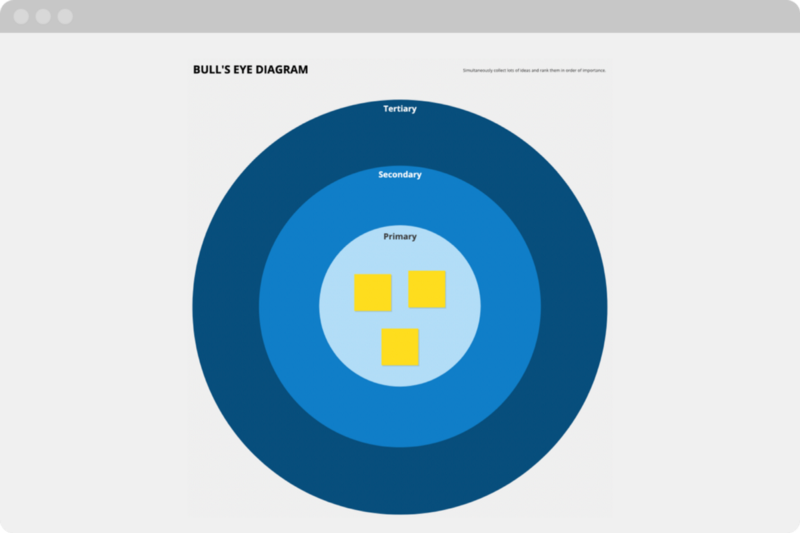Bullseye framework: what it is and how to use it in Product Marketing
The bullseye framework is widely used by Product Marketing professionals in defining the best traction channels. But have you ever heard of…
The bullseye framework is widely used by Product Marketing professionals in defining the best traction channels. But have you ever heard of this tool?
According to a survey conducted by Hootsuite on Marketing Trends for 2022, 51.4% of professionals surveyed want to increase their investments in social ads this year, mainly on Instagram, Facebook, LinkedIn, and YouTube.
But how do you make decisions about which are the best channels for the company and not waste resources on strategies that will not bring the expected ROI (return on investment)?
That’s what we’re going to talk about in today’s post when introducing the bullseye framework. You will know what this tool is, its main applications, its importance for Product Marketing, and how to apply it in your company. Enjoy reading!
What is Bullseye Framework
The bullseye framework is a structure with a target format with 3 levels, used to define the most suitable traction channels for the business acquisition strategy.
This tool is based on a set of 19 channels, from which the team must choose the best ones (after all, a company would hardly be able to handle all the channels contained in the bullseye framework ).
This is the list with all the channels considered:
Agreements and partnerships
Press office
Speeches
trade shows
events
advertising plays
offline advertising
online advertising
affiliates
Product and service engineering
Existing platforms
content marketing
company blog
IF THE
E-mail marketing
SEM (sponsored links)
viral marketing
Community
Sales
As we said, this tool has the shape of a target, with three levels, as in this image:
In the first band (or outer layer), you must include the channels that can be worked on by the company.
In the second tier (or middle tier), including the channels that are most likely to deliver good results.
In the third band (or inner layer), inside the circle, the main channels of the company should appear, those that will be prioritized and that is mainly responsible for customer acquisition.
The framework became known after the publication of the book Traction: How Any Startup Can Achieve Explosive Customer Growth , by Gabriel Weinberg and Justin Mares, which popularized the tool, especially among startups.
Framework applications
The purpose of the bullseye framework is to help companies identify the best channels, considering the various options available (and that can confuse teams), to mitigate the chances of errors and losses in a Marketing strategy.
The tool is applied to find the channels with the best growth potential, helping the team to achieve the company’s goals.
When identifying the most appropriate channels, the company must start to define the specific strategies that will be applied to each channel. Remember that the same channel can have totally different strategies, depending on the public consideration and the company’s objective.
Another use of the bullseye framework is to understand where the users with the greatest potential to become your company’s customers are, which directly contributes to boosting your growth strategies and making better decisions about which channels to invest in. Thus, the tool can help teams decide, for example, where to advertise, which partners make the most sense for the business, and which channel should be used to publicize a new app or event.
In addition, the bullseye framework should be applied at different stages of the company, because the most suitable traction channels may change as the business expands. It is also a strategic tool for startups that want to scale their operations but have tight budgets.
Importance of Product Marketing
Choosing the right channels is critical to an effective Product Marketing strategy.
The bullseye framework brings more direction to Product Marketing initiatives, helping the team save resources and avoid wasting (time, effort, and money) with inefficient traction channels that will not fulfill the company’s purpose.
By optimizing traction, the tool also contributes to increasing the user base. Therefore, the structure must always be associated with product and acquisition metrics.
Other benefits that the bullseye framework can bring to the Product strategy are:
Define the cost of acquiring customers;
Guide the tests and simplify the team’s testing routine;
Better understand the audience, their preferences, and behavior;
Avoid making mistakes (besides the tool being a great source of learning about the company’s channels).
From the insights generated by the tool, the team has more elements, for example, budgeting the channel strategy and evaluating the feasibility of execution according to the company’s possibilities.
How to apply the Bullseye Framework
To choose the channels that go into each level of the bullseye framework, the ideal is to start with brainstorming sessions that involve the Product Marketing team and then filter the ideas raised until the ideal number of channels is reached (and that the company can afford).
In this process, it is necessary to consider the viability of each channel and how many channels the business can absorb, both in financial terms and considering human resources (it is necessary to define, for example, who will be responsible for the channel and the level of experience of the people in each means of contact).
In the first track of the framework, you can include multiple channels without much filtering. As for defining the channels that will occupy the second lane, the team should go to the testing phase instead of just making assumptions about what will work. Ideally, you include up to 6 channels in this range. To discover the most interesting ones, it is recommended to raise and validate hypotheses to verify which channels can bring better results for the company and bring the team closer to its goals.
Finally, the third-tier channels should receive the team's special attention and greater focus. Tests are also needed at this point to identify the most important channels for the company. You can run the same experiments on different channels, doing A/B tests to compare results and evaluate the performance of each alternative. The goal is to identify each channel’s CAC , channel reach, and new user acquisition results.
In addition, when defining the main channels, it is always important to evaluate the return on investment and the level of effort required to execute the strategy, considering the team's expertise and users' behavior.
Another important strategy to apply and build the bullseye framework and get better results with this tool is benchmarking, which allows you to evaluate the actions of your competitors to have a broader view of how the market operates.
Therefore, the tool’s proposal is to establish some criteria for choosing channels, such as feasibility, effort, and the chance of good results, and prioritize the options according to these criteria. The idea is that you find 3 central channels, which will be placed in the third track and which should be the focus of the team. This number gives the team leeway and also avoids wasting resources.
To start creating the framework, you can download a template with the template from Miro or make your own framework using specialized tools such as Canva or Figma .
So, did you like to know more about the bullseye framework?




